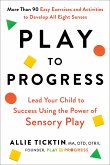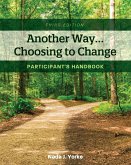- Broschiertes Buch
- Merkliste
- Auf die Merkliste
- Bewerten Bewerten
- Teilen
- Produkt teilen
- Produkterinnerung
- Produkterinnerung
This volume deals with learning, how it occurs and under which circumstances.
Andere Kunden interessierten sich auch für
![Handbook of Social Media in Education, Consumer Behavior, and Politics, Volume 1 Handbook of Social Media in Education, Consumer Behavior, and Politics, Volume 1]() Handbook of Social Media in Education, Consumer Behavior, and Politics, Volume 1239,99 €
Handbook of Social Media in Education, Consumer Behavior, and Politics, Volume 1239,99 €![Counselling in Schools Counselling in Schools]() Robert BorCounselling in Schools66,99 €
Robert BorCounselling in Schools66,99 €![Adolescence with Student CD and Powerweb ¬With Student CD and Powerweb Adolescence with Student CD and Powerweb ¬With Student CD and Powerweb]() Nancy CobbAdolescence with Student CD and Powerweb ¬With Student CD and Powerweb149,99 €
Nancy CobbAdolescence with Student CD and Powerweb ¬With Student CD and Powerweb149,99 €![Play to Progress Play to Progress]() Allie TicktinPlay to Progress14,99 €
Allie TicktinPlay to Progress14,99 €![Moral Development and Reality Moral Development and Reality]() John C GibbsMoral Development and Reality83,99 €
John C GibbsMoral Development and Reality83,99 €![Applying Generalizability Theory using EduG Applying Generalizability Theory using EduG]() Jean CardinetApplying Generalizability Theory using EduG59,99 €
Jean CardinetApplying Generalizability Theory using EduG59,99 €![Another Way...Choosing to Change Another Way...Choosing to Change]() Nada J. YorkeAnother Way...Choosing to Change41,99 €
Nada J. YorkeAnother Way...Choosing to Change41,99 €-
-
-
This volume deals with learning, how it occurs and under which circumstances.
Hinweis: Dieser Artikel kann nur an eine deutsche Lieferadresse ausgeliefert werden.
Hinweis: Dieser Artikel kann nur an eine deutsche Lieferadresse ausgeliefert werden.
Produktdetails
- Produktdetails
- Verlag: Cambridge University Press
- Seitenzahl: 344
- Erscheinungstermin: 30. November 2009
- Englisch
- Abmessung: 229mm x 152mm x 20mm
- Gewicht: 559g
- ISBN-13: 9780521478007
- ISBN-10: 0521478006
- Artikelnr.: 21448265
- Herstellerkennzeichnung
- Libri GmbH
- Europaallee 1
- 36244 Bad Hersfeld
- gpsr@libri.de
- Verlag: Cambridge University Press
- Seitenzahl: 344
- Erscheinungstermin: 30. November 2009
- Englisch
- Abmessung: 229mm x 152mm x 20mm
- Gewicht: 559g
- ISBN-13: 9780521478007
- ISBN-10: 0521478006
- Artikelnr.: 21448265
- Herstellerkennzeichnung
- Libri GmbH
- Europaallee 1
- 36244 Bad Hersfeld
- gpsr@libri.de
1. Fear of white aprons
classical conditioning; 2. A learned heart attack? The problem of extinction; 3. The World Fair's 'magic nails'
trial and error learning?; 4. An untidy child becomes tidy
signals for new habits; 5. Michael remains a troublemaker
of operant conditioning and the perils of reinforcement; 6. How Rita unlearns to like drawing
reinforcements are not all alike; 7. Waiting and learning to do without
learning to control one's own impulses and behavior; 8. Learning prosocial behaviour
social
cognitive development and the learning of social value systems; 9. Don't be afraid of exams
more than just desensitization; 10. How managers learn to cope with stress
cognitive behavior training and the development of action
regulating cognitions; 11. Learned helplessness in a senior high school student
non
contingencies and casual attributions; 12. Learning to juggle
mastering the grammar of juggling; 13. Learning from text
the construction of mental models; 14. Building your vocabulary
mechanical learning and the elaboration of semantic networks; 15. Fontane's 'John Maynard'
on global and specific learning and memory aids; 16. Learning to count: the construction of numeric networks
Piaget's theory of genetic epistemology applied; 17. How concrete is concrete learning, for example in geometry?
conceptual and figural components of learning.
classical conditioning; 2. A learned heart attack? The problem of extinction; 3. The World Fair's 'magic nails'
trial and error learning?; 4. An untidy child becomes tidy
signals for new habits; 5. Michael remains a troublemaker
of operant conditioning and the perils of reinforcement; 6. How Rita unlearns to like drawing
reinforcements are not all alike; 7. Waiting and learning to do without
learning to control one's own impulses and behavior; 8. Learning prosocial behaviour
social
cognitive development and the learning of social value systems; 9. Don't be afraid of exams
more than just desensitization; 10. How managers learn to cope with stress
cognitive behavior training and the development of action
regulating cognitions; 11. Learned helplessness in a senior high school student
non
contingencies and casual attributions; 12. Learning to juggle
mastering the grammar of juggling; 13. Learning from text
the construction of mental models; 14. Building your vocabulary
mechanical learning and the elaboration of semantic networks; 15. Fontane's 'John Maynard'
on global and specific learning and memory aids; 16. Learning to count: the construction of numeric networks
Piaget's theory of genetic epistemology applied; 17. How concrete is concrete learning, for example in geometry?
conceptual and figural components of learning.
1. Fear of white aprons
classical conditioning; 2. A learned heart attack? The problem of extinction; 3. The World Fair's 'magic nails'
trial and error learning?; 4. An untidy child becomes tidy
signals for new habits; 5. Michael remains a troublemaker
of operant conditioning and the perils of reinforcement; 6. How Rita unlearns to like drawing
reinforcements are not all alike; 7. Waiting and learning to do without
learning to control one's own impulses and behavior; 8. Learning prosocial behaviour
social
cognitive development and the learning of social value systems; 9. Don't be afraid of exams
more than just desensitization; 10. How managers learn to cope with stress
cognitive behavior training and the development of action
regulating cognitions; 11. Learned helplessness in a senior high school student
non
contingencies and casual attributions; 12. Learning to juggle
mastering the grammar of juggling; 13. Learning from text
the construction of mental models; 14. Building your vocabulary
mechanical learning and the elaboration of semantic networks; 15. Fontane's 'John Maynard'
on global and specific learning and memory aids; 16. Learning to count: the construction of numeric networks
Piaget's theory of genetic epistemology applied; 17. How concrete is concrete learning, for example in geometry?
conceptual and figural components of learning.
classical conditioning; 2. A learned heart attack? The problem of extinction; 3. The World Fair's 'magic nails'
trial and error learning?; 4. An untidy child becomes tidy
signals for new habits; 5. Michael remains a troublemaker
of operant conditioning and the perils of reinforcement; 6. How Rita unlearns to like drawing
reinforcements are not all alike; 7. Waiting and learning to do without
learning to control one's own impulses and behavior; 8. Learning prosocial behaviour
social
cognitive development and the learning of social value systems; 9. Don't be afraid of exams
more than just desensitization; 10. How managers learn to cope with stress
cognitive behavior training and the development of action
regulating cognitions; 11. Learned helplessness in a senior high school student
non
contingencies and casual attributions; 12. Learning to juggle
mastering the grammar of juggling; 13. Learning from text
the construction of mental models; 14. Building your vocabulary
mechanical learning and the elaboration of semantic networks; 15. Fontane's 'John Maynard'
on global and specific learning and memory aids; 16. Learning to count: the construction of numeric networks
Piaget's theory of genetic epistemology applied; 17. How concrete is concrete learning, for example in geometry?
conceptual and figural components of learning.








